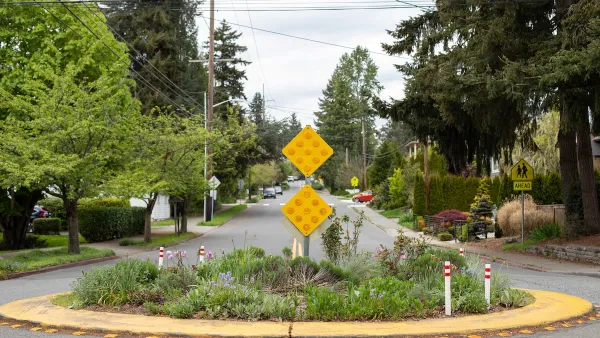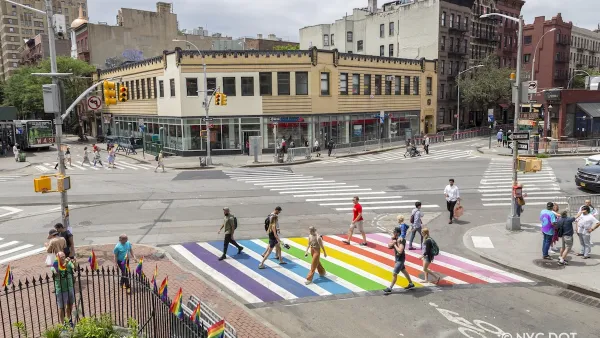A bit of bizarre news caught my attention recently and it got me thinking. It was about these roads in Japan that had been designed to play music as cars drive over them. The engineers behind this idea cut thousands of grooves into the roadway, separated them by certain specific intervals, and then drove their cars. What resulted is a weird humming melody that reverberates in the cars as they drive. The video linked below showing the roads and their songs is awesome, but so much more could be done.
A bit of bizarre news caught my attention recently and it got me thinking. It was about these roads in Japan that had been designed to play music as cars drive over them. The engineers behind this idea cut thousands of grooves into the roadway, separated them by certain specific intervals, and then drove their cars. What resulted is a weird humming melody that reverberates in the cars as they drive. The video linked below showing the roads and their songs is awesome, but so much more could be done.
These singing streets are an impressive novelty, but this idea could be far better utilized to improve road safety. Using this same sort of groove-cutting, sound-producing method, it seems like road engineers could make major progress in the reduction of traffic accidents.
Slicing grooves into new roads as they approach intersections and stop signs, for instance, would be a pretty simple way to keep drivers alert. Maybe I'm trivializing a major engineering feat, I don't really know. But it seems fairly reasonable to me, especially since most of the hard work has already been done by the innovative engineers at Japan's Hokkaido Industrial Research Institute. What I'm suggesting doesn't have to be an elaborate symphony on the road, just a simple ascending tone that would get higher and higher as a car approached an intersection. A stop sign can be overlooked or obstructed by trees, but a reverberating sound inside the cab of a vehicle is pretty hard to not notice. This would, in my mind, be a very effective way to reduce the rate of cars crashing into pedestrians, cyclists, trains and other cars. This method has already been utilized along the sides of highways across the country in the form of "rumble strips", jarring drivers with a loud noise if they slip too far into the shoulder.
What I'm suggesting doesn't have to be an elaborate symphony on the road, just a simple ascending tone that would get higher and higher as a car approached an intersection. A stop sign can be overlooked or obstructed by trees, but a reverberating sound inside the cab of a vehicle is pretty hard to not notice. This would, in my mind, be a very effective way to reduce the rate of cars crashing into pedestrians, cyclists, trains and other cars. This method has already been utilized along the sides of highways across the country in the form of "rumble strips", jarring drivers with a loud noise if they slip too far into the shoulder.
This proposed method would not only be effective, but cheap, too. That's right, fellow taxpayers, our public-good streets can be safer without costing us any additional cash. Say goodbye to flashing (and often confusing) pedestrian crossing signs and those energy-dependent blinking road bumps in the crosswalk. Imprinting grooves in the pavement means using less pavement, and you don't have to be an economist to understand those savings. This method is what environmental scientists refer to as a "passive" technique – meaning no energy is required to maintain operation. Just cut ‘em up and let the sounds work their life-saving magic. At least that's how I assume it would work.
Common "traffic calming" techniques like speed bumps and bulb-outs have been known to be effective, but they require additional construction and materials, amounting to additional costs to the taxpayer. Putting a little bit of effort into finding the right groove spacing to make the roads actually communicate with drivers would be an insignificant cost compared to that of the traditional bumps and bulges. And when weighed against the lives it would save, the cost would be negligible. We're probably not going to stop building roads in this country any time soon, so we might as well do whatever our stressed infrastructure budget will allow to make them as safe as possible.

Planetizen Federal Action Tracker
A weekly monitor of how Trump’s orders and actions are impacting planners and planning in America.

Chicago’s Ghost Rails
Just beneath the surface of the modern city lie the remnants of its expansive early 20th-century streetcar system.

Amtrak Cutting Jobs, Funding to High-Speed Rail
The agency plans to cut 10 percent of its workforce and has confirmed it will not fund new high-speed rail projects.

Ohio Forces Data Centers to Prepay for Power
Utilities are calling on states to hold data center operators responsible for new energy demands to prevent leaving consumers on the hook for their bills.

MARTA CEO Steps Down Amid Citizenship Concerns
MARTA’s board announced Thursday that its chief, who is from Canada, is resigning due to questions about his immigration status.

Silicon Valley ‘Bike Superhighway’ Awarded $14M State Grant
A Caltrans grant brings the 10-mile Central Bikeway project connecting Santa Clara and East San Jose closer to fruition.
Urban Design for Planners 1: Software Tools
This six-course series explores essential urban design concepts using open source software and equips planners with the tools they need to participate fully in the urban design process.
Planning for Universal Design
Learn the tools for implementing Universal Design in planning regulations.
Caltrans
City of Fort Worth
Mpact (founded as Rail~Volution)
City of Camden Redevelopment Agency
City of Astoria
City of Portland
City of Laramie




























